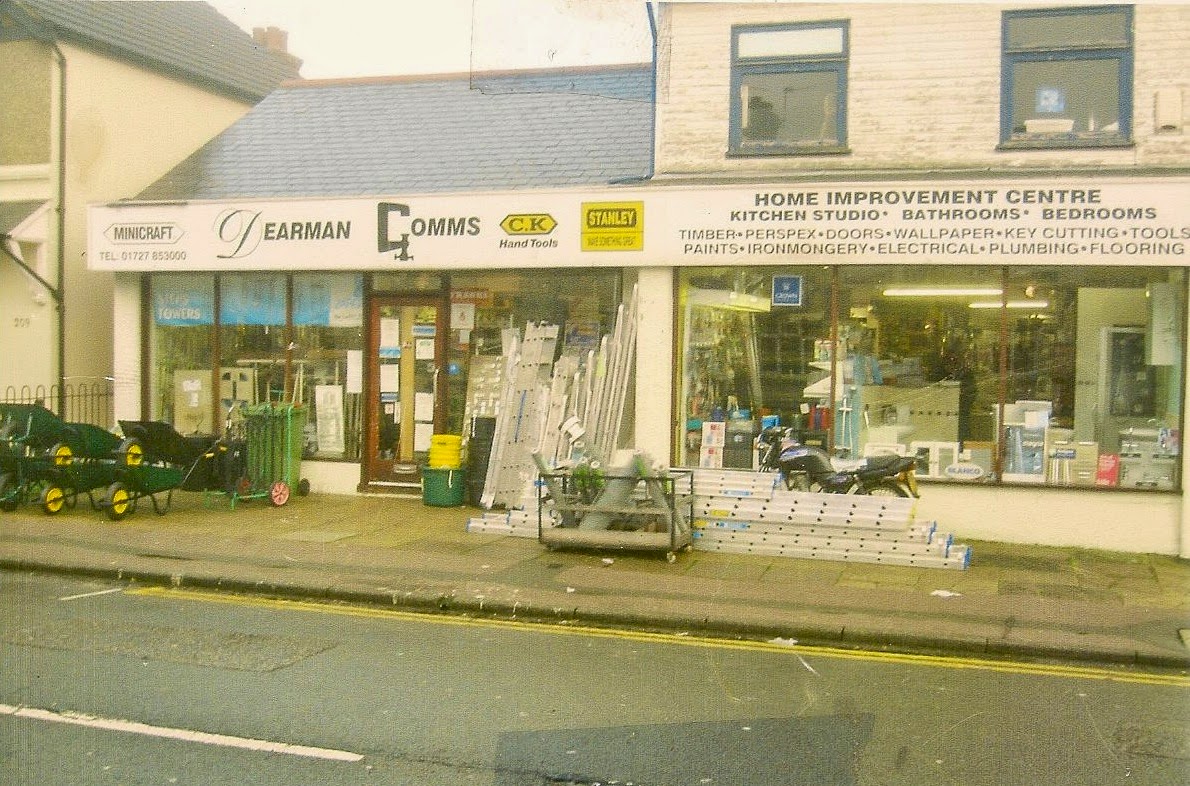In 2008 four contributors to a 48-page book they gad been working on, saw their publication go to print. It was titled
Marshalswick: the story of a house and its estate. From the cover shown below right many St Albans people will recall seeing it on sale. Because of its restricted funding, the volume quickly sold out.

Now, those joint authors, Brian Adams, Clare Ellis, Elizabeth Gardner and Helen Leiper, have reached an agreement with the Sandridge 900 Organising Committee, by which the latter has funded a reprint, copies which now on sale at the Museum of St Albans.
Of especial interest to anyone who was unaware of the existence of a large house sitting in extensive grounds to the south of Marshals Drive, it is also a great relief to all who had intended to purchase a copy and then discovered stocks had become exhausted. Well, now you can.
It may come as a surprise to another author, living in St Albans, that his book, not only features on this website (and now its blog), but is an artefact at the Discover Sandridge exhibition currently running at the Museum of St Albans.

Allen Nicklin wrote an unusual fiction book in 2012, called
Winning the Benevolent Cup and Reaching First Base. I came across it in a shop called Raindrops on Roses in High Street, St Albans. It is an unusually-written story blending some eyebrow-raising accounts of teenage life in a fictional St Albans with events which we all knew about at the time through the national press. I say fictional, but most of the places can be identified, roads, bus routes and other places are named correctly; even the main character in what is clearly an autobiographical account has a name too similar to that of the author! Only the name of the school, which features strongly, has been changed, but it is clearly the formerly-named Marshalswick Boys' School.
The book is of special interest to me, quite apart from its entertainment value, as Allen attended that school just a few years after me, so I could tick off the same people, events and locations which he weaves into his chapters. If anyone reading this knows Allen Nicklin, perhaps you would ask him to get in touch. Whether there are any copies left I am not sure, but I think it may now be available as an e-book.
A recent trawl through the 1911 census returns recently revealed a place I had not previously known of. At the hamlet which was called Horseshoes before WW2 (now Smallford) was living Frederick Simpkins, a general labourer. With his family were staying two boarders, Charles Prickett and Frank Legg. Their occupations, respectively, were Green Keeper and Golf Labourer, both at the Hatfield Road Links. Yes, the Hatfield Road Links. Further along the road at Ellenbrook lived William Parrott, a horse driver at the Hatfield Golf Club, and Edward Henderson was a professional golfer at these links.
This place does not feature on any map of the period, and if the road has been named correctly it would be located somewhere west of the former Popefield farm homestead. It is possible, however that what was meant was St Albans Road west, which the main road is named from Popefield to the centre of Hatfield. Great Nast Hyde is in this section, as were a number of large detached homes on the north side of the road at Ellenbrook. All of those have now been demolished.
Does anyone have knowledge of golf links along Hatfield Road, and how long the facility lasted? Or was it Hatfield Golf Links, not Hatfield Road Golf Links? Suggestions? Remember, this was in 1911.
Finally, in this blog of miscellaneous content, what a wonderful sight yesterday afternoon at Fleetville Rec. Shortly after the schools were finished for the week, parents and young children could be heard and seen on that part of the rec near Royal Road and the Beech Tree Cafe. Enjoying each others' company, children were using the varied items of play equipment or simply the open space, while parents, mainly mums, chatted and enjoyed a drink. It was a scene of unfettered joy for all. The rec has never been such a popular honeypot.










































